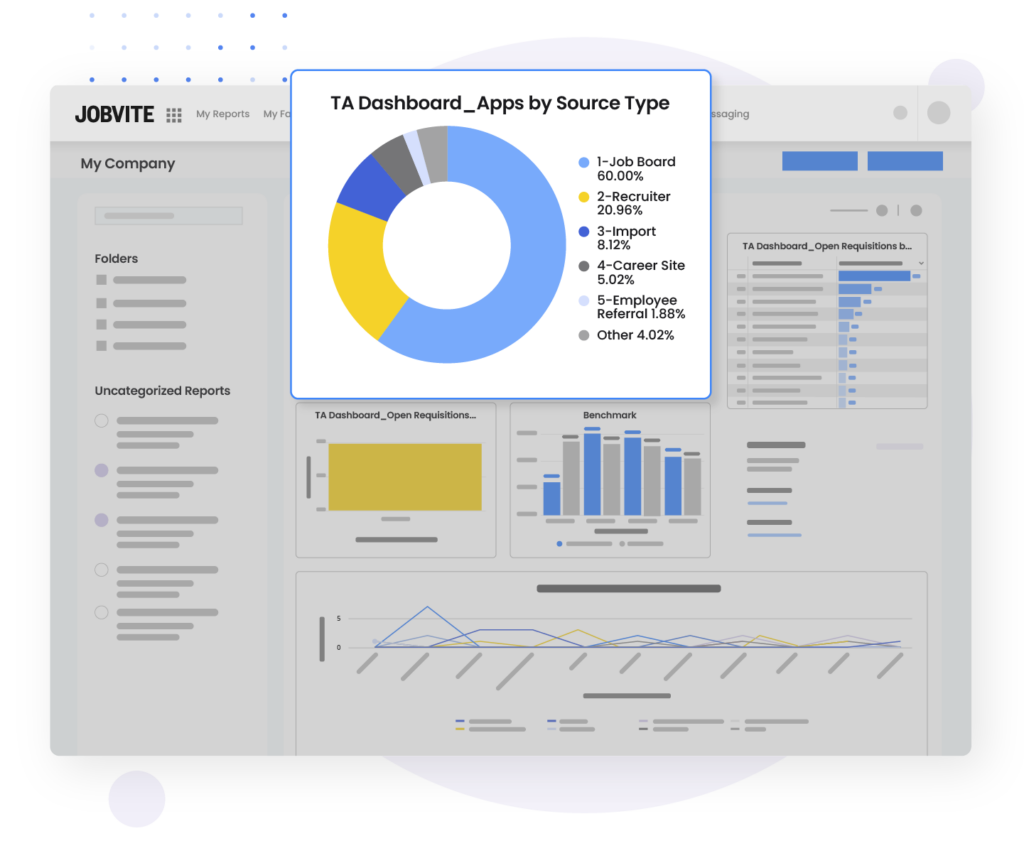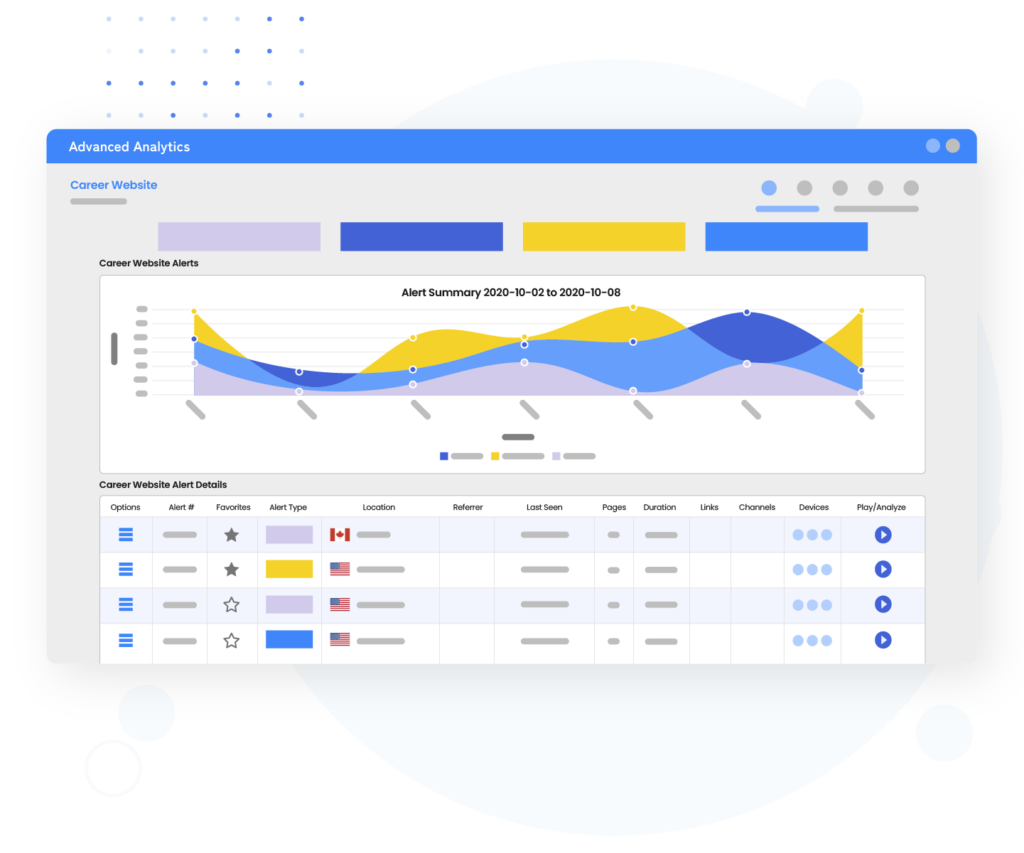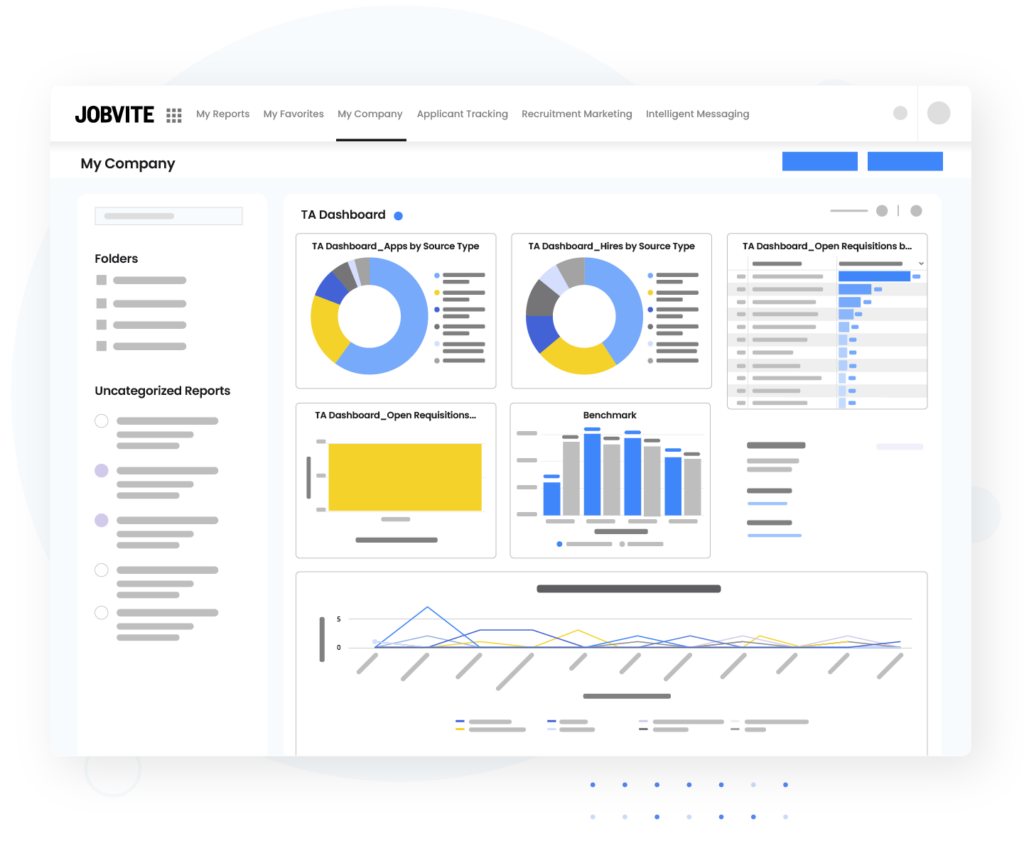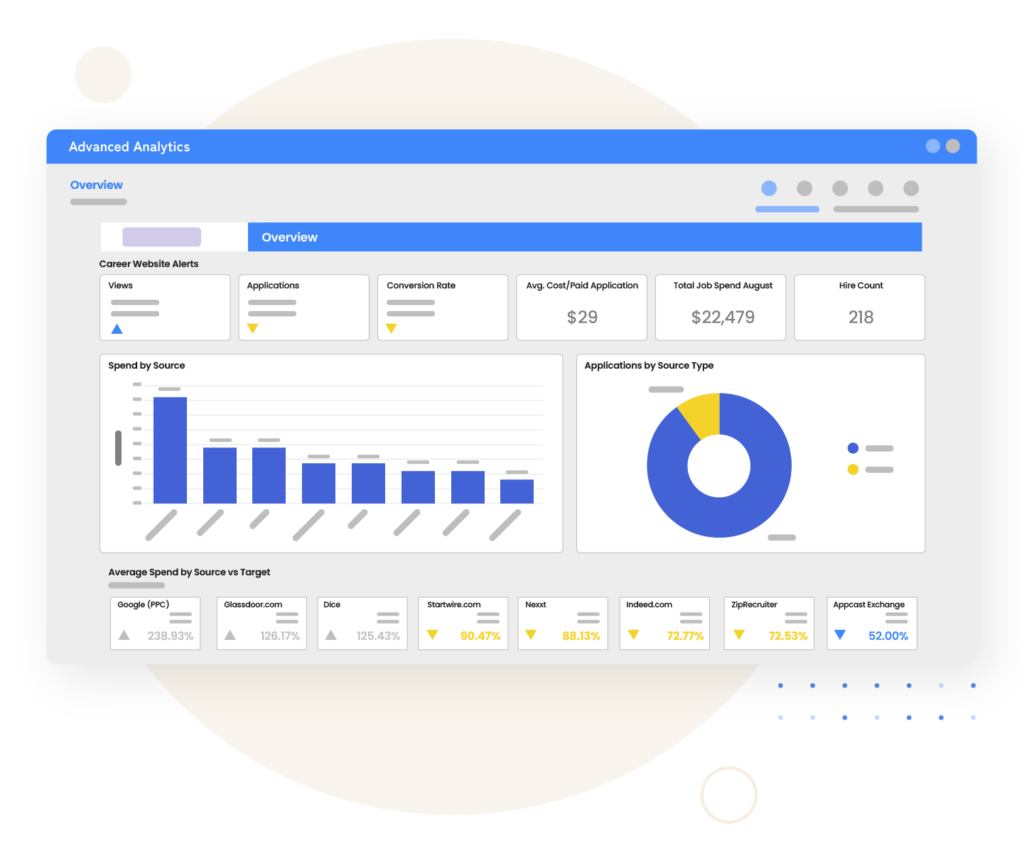
The demand for skilled professionals continues to surge among employers worldwide today. The harsh reality is businesses that wish to thrive amidst this competition must invest in their people — and that means taking full advantage of their (likely robust) candidate data sets.
It’s no longer enough to simply rely on gut instinct or basic metrics to make informed decisions about the talent to bring onboard and retain at your organization. That’s where talent analytics comes into play.
The 2022 World of Work Trends Report found 76% of top employers already use talent analytics to evaluate their recruiting and hiring progress.
This need for deeper-level HR/TA data comes as a response to the rise in competition for skilled workers, leaving talent acquisition leaders grappling for insights into the people and skills needed for continued success.
In short, talent analytics is a strategic tool that enables recruiting teams to go beyond simple metrics and gain a deeper understanding of talent in their database. Simply put, those who fail to leverage it have effectively put blinders on to the needs of their organization’s future success.

The power of talent analytics
Improve application completion rates. Better recruitment marketing engagement. More opens of and replies to nurture emails. Savvier and swifter interview processes. Talent analytics empowers enterprise recruiting teams like to operate smarter and faster and improve key facets of their TA efforts such as these.
By leveraging talent analytics, you can gain valuable insights into your current recruitment strategies’ effectiveness, identify improvement areas, and make data-driven decisions to enhance your talent acquisition process.
This includes everything from tracking key performance metrics such as time to fill and cost per hire to analyzing candidate data through onboarding and retention to better understand which sourcing channels and tools are most effective in attracting top talent.
With robust, real-time talent analytics at your disposal (and, ideally, in a single source of truth with other applicant-tracking and candidate relationship management capabilities), you can make more strategic decisions throughout your TA process, resulting in greater success in attracting, hiring, and retaining top talent.
“Data-driven talent acquisition teams are more likely to be successful than organizations hiring blindly,” Society for Human Resource Management Online News Manager & Editor Roy Maurer recently wrote.
Benefits of talent analytics
Talent analytics is one of the most powerful tools available for this purpose, enabling organizations to gain a deeper understanding of their recruitment processes, identify areas for improvement, and make decisions based on solid data.
Here are the primary use cases for talent analytics to revolutionize your organization’s talent acquisition process, resulting in increased success in attracting, hiring, and retaining top talent.
Identify key recruitment metrics
Talent analytics is a transformative tool that empowers companies to easily identify the most critical recruitment metrics. With the ability to track key performance metrics such as time to fill, cost per hire, and quality of hire, talent acquisition leaders can gain a deeper understanding of the effectiveness of their hiring strategies.
By measuring these metrics over time, recruiters can make informed decisions about which sourcing channels, tools, and processes work best for their org.
For example, which hiring managers are taking longer than necessary to interview candidates, losing weeks of hard work, and which method of contacting candidates yields the best results? However, don’t just grab a list of another company’s goals. What is unique to your business?
While time to fill measures the duration between the job posting and filling the position, it doesn’t consider the quality of the hire. On the other hand, time to hire defines the time from initiation to acceptance of the job offer and indicates how efficient the hiring process is.
All in all, it’s a more accurate metric to measure a recruitment team’s performance.

Improve the candidate experience
Talent analytics represents a transformative tool that can help orgs like yours create a more positive candidate experience during the recruitment process. By analyzing recruiting data, HR pros can gain valuable insights into the most effective ways to attract and retain top-tier talent.
This could include streamlining application processes, improving communication between candidates and recruiters, or even identifying potential organizational cultural improvement areas.
With this information, talent acquisition leaders can make data-driven decisions that lead to a better overall experience for candidates and improve their chances of accepting an offer of employment.
Not only does this enhance the organization’s reputation, but it also helps create a more engaged and committed workforce that can lead to long-term business success.
Retain top talent at your business
Talent analytics enables orgs to understand the drivers of employee engagement and retention.
By analyzing employment data, talent acquisition leaders can identify factors contributing to employee satisfaction and commitment, such as compensation, benefits, work-life balance, and career growth opportunities.
With this information, organizations can take proactive steps to improve these areas, reducing turnover costs and retaining top talent for the long term.
By leveraging talent analytics, organizations can stay ahead of the curve by making data-driven decisions that improve employee satisfaction, increase retention rates, and create a more engaged and committed workforce.

Predict your talent acquisition needs
With the help of data-driven analytics, HR pros can predict future talent needs and proactively create strategies to address recruiting benchmarks, ensuring their business remains competitive in the evolving job market.
By leveraging data-driven analytics, talent acquisition leaders can identify trends in the job market, analyze internal employment data, and make informed decisions about which skills and competencies to prioritize in new hires.
This not only enables organizations to stay ahead of the curve but also ensures that they remain competitive in today’s ever-evolving job market.
With this information, talent acquisition leaders can create proactive recruitment strategies that address recruiting benchmarks, reducing time to hire and improving the quality of candidates attracted to the organization.
Help keep hiring managers engaged
One area that often gets overlooked is the importance of hiring managers. If they’re not satisfied with the recruitment process, it can hold things up and cause delays in getting new talent on board.
On the other hand, if they’re happy with the quality of the candidates and the speed at which positions are filled, they can be instrumental in making the recruitment process successful.
Get buy-in from your executive team
Understanding your organization’s true business objectives is one thing. Proving you’re correct? A little more challenging without talent analytics.
For example, acceptance rate as a performance metric. Some would argue this metric is crucial because it tells you if your company is effectively attracting and retaining top talent.
With historical data and talent analytics backing you up, you’ll have a clearer idea of why someone might reject an offer from your company. Maybe your compensation package is not competitive enough, or perhaps you need to work on your company’s image and reputation.
With talent analytics, you can identify these patterns and make data-driven decisions to drive meaningful change in your department — and, in the grander scheme of things, for your company at large.

Implementing talent analytics at your organization
In today’s competitive job market, you can’t afford to take a reactive approach to talent analytics implementation. Utilizing talent analytics can help you identify the most effective recruitment strategies, improve the candidate experience, retain top talent, and predict future talent needs.
However, implementing talent analytics is more complex than flipping a switch.
It requires a comprehensive, well-planned approach that considers the unique needs of your organization — and what specific tech that will enable you to make more intelligent hiring decisions.
A few of the essential steps to implementing talent analytics successfully include:
Setting clear objectives
Clearly define your talent acquisition goals and objectives, focusing on your organization’s decided key performance indicators (KPIs) to track your progress. These KPIs could be acceleration through the process, length of retention post-hire, internal vs. external hire, and so on.
Let’s use an example of Number of Qualified Candidates as our KPI and walk through the process of how talent analytics can accelerate and supercharge this one key area of recruitment success:
Collecting and centralizing data
Gather relevant employee data, such as demographics, performance reviews, and skill sets to get a clear picture of success as you define it. Just be sure to remain compliant with data regulations.
To start, you need to collect data on the number of qualified candidates that make it through your recruitment pipeline. This data can come from any source you’re using in your process, whether it’s your applicant tracking system (ATS), Excel spreadsheets, or other data-gathering tools.
Once you’ve collected the data, you need to analyze it to gain insights into your recruitment process.
Analyzing talent analytics dashboards
Utilize analytical tools and techniques to generate insights from the collected data, identifying trends and patterns that influence your KPIs and noting what needs improvement.
By analyzing your acceptance rate over time, you can identify patterns and potential issues, such as a low acceptance rate for a certain job category or location, and adjust your hiring strategy accordingly. For example, you may need to re-evaluate your compensation package or your employer branding efforts to attract top talent.
Taking action on your insights
Use the generated insights to create data-driven strategies to improve your recruitment and retention processes and ultimately achieve your KPIs.
Maybe you notice a low number of qualified candidates. This could point to issues with your sourcing efforts. Perhaps you’re not casting a wide enough net or targeting the right candidate pools.
Or, maybe there’s an issue with screening your candidates, and you’re not identifying the right skills and experience in the applicant pool. This could lead to different sourcing methods and renewed job descriptions and advertisements as tangible changes.
Evaluating your performance
Continuously monitor and evaluate the success of your strategies by analyzing your KPIs and adjusting your approach as needed.
By tracking key performance indicators such as time to fill, candidate experience score, and interview-to-offer ratio, you can gain valuable insights into your recruiting process’s effectiveness. But it’s not enough to analyze these metrics once and forget about them.
Successful recruiting teams continue to monitor them over time to make data-driven decisions and improve processes. After all, the recruitment landscape is constantly evolving, and what worked last year may not work this year.
The world of talent acquisition is in constant flux, and organizations that adapt their HR strategies with the help of talent analytics will ultimately have a competitive edge.
By incorporating robust, real-time talent analytics into your business, you can ensure that your org makes the best possible people decisions, leading to tremendous talent acquisition success.
Learn how the robust, dynamically updated talent analytics in Evolve, our complete talent acquisition suite for enterprises, can help your TA team make smarter, faster decisions.





